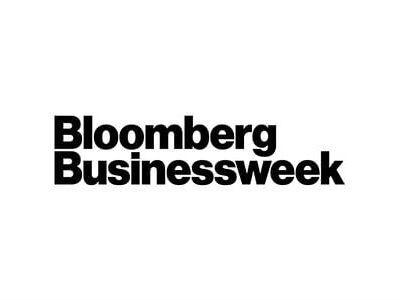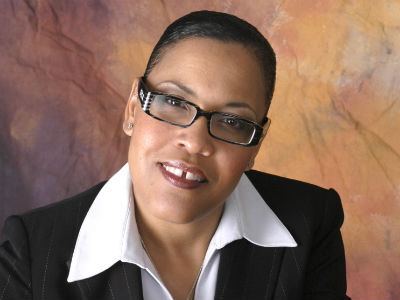Indigenous Peoples Day post revives debate over how the Alamo’s history should be told
News > Technology News

Audio By Carbonatix
10:03 AM on Friday, October 24
By KAYLA GUO/The Texas Tribune
On the second Monday of October, the historic Alamo’s official X account posted two messages: one wishing its followers a happy Columbus Day, and another recognizing Indigenous people.
“Today, we honor Indigenous Peoples and their communities, recognizing their history at the Alamo,” the second post read. “Opening in 2027, the Alamo Visitor Center and Museum will feature an Indigenous Peoples Gallery, celebrating the bands, clans and tribes that shaped the region. #IndigenousPeoplesDay.”
By Tuesday morning, after a swift and aggressive rebuke by Republican Land Commissioner Dawn Buckingham, whose agency oversees the Alamo, only the Columbus Day post remained up.
“This is frankly unacceptable and it has been deleted,” Buckingham said about the Alamo’s Indigenous Peoples Day post. “Woke has no place at the Alamo.”
The scrap was the latest in an enduring dispute over how the history of the Alamo and the Texas Revolution should be told. Republican state leaders have largely insisted that the story of the site be narrowly focused on the 13-day siege and legendary 1836 Battle of the Alamo, rejecting broader narratives that address the Indigenous people of the area and consider the role slavery played in the fight for Texas independence.
On Thursday, Lt. Gov. Dan Patrick called for the resignation of Kate Rogers — the president of the Alamo Trust, which manages the site — for views she expressed in a 2023 doctoral dissertation that he called at odds with Republican state leaders’ desire to foreground the 1836 battle. It was not immediately clear if Rogers would resign.
Buckingham followed up her social media post with a searing letter to the Alamo Trust decrying a “blatant disregard of the battle-centric focus of The Alamo” at the organization. She also criticized a proposed “land acknowledgement” plaque and a draft script of historical descriptions to be displayed in the new Alamo museum, which she said included the word “liberty” only 13 times, and “slavery” and “enslaved” a combined 70 times.
“This speaks to a pattern of behavior that is completely misaligned with the priorities of my office, and the vast majority of Texans who care so deeply about our Shrine of Liberty,” Buckingham said in the letter, in which she also demanded greater oversight of the Alamo’s public communications. “We owe it to all Texans, including future generations, to preserve, protect and defend our proud Texas history, without succumbing to the pitfalls of modern ideology.”
Asked what specifically was objectionable about the Alamo’s Indigenous Peoples Day post — a version of which the account has postedin previous years to little controversy — the General Land Office pointed to her letter, which cited President Donald Trump’s proclamation declaring the second Monday of October Columbus Day.
Former President Joe Biden was the first president to recognize Indigenous Peoples Day on the same day as Columbus Day in 2021. But this year, Trump issued a proclamation to “ reclaim ” Christopher Columbus’ legacy, posting on social media that he would bring Columbus Day “ back from the ashes.” Buckingham’s response came after conservative commentator Michael Quinn Sullivan highlighted the Alamo’s post, saying, “Who thought this was a good idea?”
Former San Antonio Mayor Ron Nirenberg, a Democrat, called Buckingham’s response a “silly overreaction to this idea that understanding and acknowledging complex history” is somehow “woke.”
The political environment has “just gotten stupider as the day goes by,” Nirenberg, who was involved in the Alamo redevelopment project as mayor from 2017 to June 2025, said in an interview. “Indigenous people were part of the foundation of our state, and certainly of the grounds of the Alamo. Indigenous people are part of the history and present.”
In response to Buckingham’s letter, the Alamo Trust’s Board of Directors quickly apologized and said that it had “taken immediate action in terms of personnel and also instituted new monitoring systems and approval processes” for its public communications.
The post “did not align with the expectations and standards of the Texas General Land Office nor the proud history of our state’s most beloved historic site,” the board said in a statement, adding that it shared Buckingham’s “commitment to ensuring that every step we take at The Alamo and every project we move forward exudes the patriotism and heroism that are integral to the story of the Shrine of Texas Liberty and our courageous and exceptional state.”
In a statement, the GLO said it received the Trust’s response and was “discussing the next steps in social media processes and content oversight.”
In developing the Alamo Plan to restore and expand the site, the GLO, Bexar County and City of San Antonio agreed to a set of “ guiding principles ” in 2015 that include telling “the entire history of the Alamo area” and embracing “the continuum of history to foster understanding and healing.”
“The General Land Office has been involved in this process from the very beginning,” Ramón Vásquez, executive director of the American Indians in Texas at the Spanish Colonial Missions, said about Buckingham’s reaction to the social media post. “It doesn’t make sense to me that all of a sudden, it’s a surprise” that the Alamo would mention Indigenous people.
The new museum, which is slated to open in 2027, is set to feature a gallery that will “uncover the lives of the Indigenous peoples who first settled around the San Antonio River thousands of years ago.” The museum will also include seven other galleries tracing the history of the Alamo from its Indigenous context through the Battle of the Alamo and its legacy in Texas and the broader United States.
Vásquez, a member of the Alamo Citizens’ Advisory Committee since 2014, said he read Buckingham’s letter as a “threat” to the galleries. He argued that it would be “unacceptable” to present a narrative of the site based solely on the 13-day siege and battle, without covering the area’s longer history.
The GLO said in an email to the Texas Tribune that the museum will be “battle-centric” while setting the Alamo “in the context of time from Native American presence at the site, to how the Alamo continues to influence Texas culture today.”
The GLO noted that the Battle of the Alamo gallery will be the museum’s “largest exhibit,” and that a 4D theater serving as the museum’s centerpiece will “place visitors in the middle of the battle for Texas independence.”
Political battles over the Alamo have haunted land commissioners of the past, including Buckingham’s predecessor, George P. Bush. Bush’s handling of the redevelopment faced criticism from Lt. Gov. Dan Patrick and other Republicans, and tension over the project persisted through his unsuccessful Republican bid for attorney general against incumbent Ken Paxton in 2022.
Earlier this year, the Legislature passed a bill transferring oversight of the Alamo from the GLO to a commission consisting of the governor, lieutenant governor, House speaker and two lawmakers. The bill goes into effect in 2027.
Nirenberg argued that the role of state and local officials should be to act as stewards of the redevelopment, including by ensuring the guiding principles are followed.
“We wanted to make sure that it was as free from the winds of politics as possible, and that’s easier said than done given the fact this is part of the core identity of being a Texan,” he said. “We’ve got to keep the wackiness of today’s politics away from the execution of this plan, and this post and unpost nonsense just tells me that that work needs to continue with focus.”
___
This story was originally published by The Texas Tribune and distributed through a partnership with The Associated Press.







